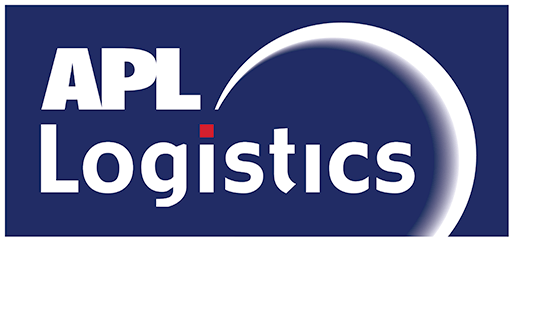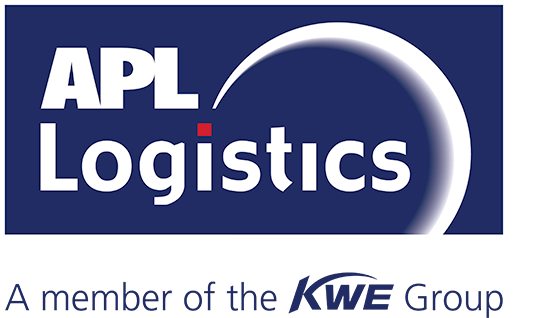September 9, 2024 in PODCASTS
Navigating Supply Chain Disruptions: Insights from Jens Larsen
April Chapman:
Hello everyone, and welcome to the APLL Pulse Podcast where you can uncover new insights from the logistics and freight forwarding industry through the seasoned experts at APL Logistics, a global supply chain provider. We’ll help you keep pace with the current topics impacting businesses, and advance your logistics strategy.
Well, hello everyone. I’m your host, April Chapman. The APLL Pulse Podcast is excited to be back and we have a great lineup of new guests and topics in the coming months. To kick us off, we have Jens Larsen, the head of APLL’s global order management product development. Oh my goodness, Jens, that’s a long title.
Jens has been in the supply chain world for over 30 years. Hard to believe people, it’s hard to believe, and I want to lean into his expertise when it comes to current trends, consumer behaviors, and what he is seeing regarding customer needs. So Jens, can you tell our listeners a little more about yourself and your background?
Jens Larsen:
I can indeed, April. Thank you very much for inviting me today. As you might tell from my accent, I’m Danish. I grew up in Denmark, I moved to Germany back in my early 20s. Back then I was working for an apparel fashion company in their logistics. I joined APLL a couple of years later as a part of APLL’s account management team. I moved into engineering and solutions development builds and so on. Always at the place here of working closely with many of our key customers.
I’ve always been fortunate enough to travel extensively across the globe, spending a lot of time in key production countries, in Asia, in factories, in ports. Meeting people across many different functions and many companies, and really developing a sense of the operational realities that we are all a part of, realities that impact how people operate on the ground, how companies function across the world, and of course also how global trade is impacted through the different types of operations, disruptions, et cetera. April, you said that I’ve been in business for more than 30 years. Actually, it’s just about that, so I’m not that old.
April Chapman:
Oh, take back a couple of those years then for sure.
Jens Larsen:
Totally.
April Chapman:
Also, you and I love traveling and that’s what I always tell young people now. I’m always like, “If you really love to travel and want to see the world, look at global companies.” I never thought of that when I was younger, but it gives you opportunities you may never have had otherwise.
Jens Larsen:
It absolutely does. It really gives you the ability to see the world from different angles, different perspectives, et cetera.
April Chapman:
That’s right, it’s a real benefit. Okay, Jens, So let’s start out our discussion with some of the current trends you’re seeing in the logistics space. So one of the keywords that I know we’ve had multiple discussions, and it’s come up lots of times, is the word disruption. So, can you give some examples of disruption and how that’s happening in the industry?
Jens Larsen:
Absolutely. I think disruptions happen all the time, left, right and center. We see disruptions increasingly impacting our world, and of course also the world of our customers. Disruptions are plentiful, it’s wars and conflict, it’s what we are seeing in the Red Sea, what is impacting trade in Russia and Ukraine and so on. It’s civil unrest, it’s strikes, it’s labor conflicts, it’s natural disasters, flooding, drought, et cetera, impacting the flow of products. It can be cybersecurity risk, IT outages as well as we have seen recently, trade wars. Brexit, obviously going back a few years, pandemic as well. Everybody still talks about COVID despite the fact that it’s almost five years ago, that that hit the world. Hold explosions, bridge collapses, et cetera. The list continues and I think that’s really, that’s what we’re seeing.
Of course, disruptions can also be more positive in nature. Disruption can also be a certain increase in demand for a particular product that again, has the same effect, the same implication, i.e., These types of disruptions impact customer’s ability to move the right product to the right place at the right time, and of course as effectively as possible from a cost and carbon emission standpoint. So that’s really the impact of many of these disruptions that we see.
Of course, it’s interesting also to observe how companies are going about disruptions. Many companies tend to look at the immediate disruption that is right in front of us, perhaps that has made it to the headlines of the news, and then these companies try and cope with that immediate impact. But I think what we are also seeing is that companies are perhaps paying less attention to the many previous disruptions that occurred last week or last month or perhaps last year. And again, that is that trend. I think the reality, et cetera. Some of the observations that we are trying to navigate around, because at the end of the day, the way we look at disruption is it’s a part of our business. Disruption is a part of global supply chain life.
April Chapman:
It’s a part of everybody’s life. All the things that you’re mentioning. I’m a news person. I’m always pulling up my app and looking at the news. And you’re talking about something I see every day. There’s something going on that’s disrupting. But I wasn’t thinking about the positive disruptions like you said, which is also a daily occurrence because I like to get on TikTok, I like to watch some videos. And I’m on there and I just see the TikTok shop and all of a sudden something goes viral and people want it the next day.
A lot of positive disruptions. One of the things I really love about the logistics space is that we’re problem solvers. One time I was interviewing somebody and he had just graduated with a degree in logistics and I said, “So what led you to logistics?” To be honest, as a young person, I didn’t know about the field at all. And here he was this young person he knew about, who was very engaged, very interested in it. And I was like, “What drew you to that?” He’s like, “Well, I took some personality typing questions and found out I love problem solving.” That’s what it determined. And they said, “This would be a good industry for problem.” And I was like, “Yes.” Because that’s what a lot of what we do right, is solve problems for customers.
All right, so can you give an example of how we were able to help solve some disruptions for customers or anything like that?
Jens Larsen:
Of course, because as you rightly say, this is what we are doing every day. Again, considering the impact that disruptions has on company’s abilities to move product. And that’s really the business we are in when we consider logistics and what it is, it is a movement of the clothes we wear. It’s a movement of the cars we drive, of the furniture we furnish our houses with, et cetera. So of course there’s so many disruptions happening on a daily basis within the process of moving products from the point of source to point of destination.
I would say perhaps on a general basis, if a disruption hits, then we can distinguish between what is the stage at which the product is. If the product is in transit between the point of source and the point of destination, then it’s a matter of detecting what is the exact position of that product, i.e., where is my product, where are my goods? And of course, on that basis then detect or predict when are the goods going to be available at the next point of destination or at the point of discharge.
And then following on from that, start assessing if there’s a delay caused by that disruption. What can be done at the point of discharge in order to mitigate that delay and reduce it to the greatest possible extent, reroute the product, select a ship mode for the final destination that gets the product from the point of discharge into the point of demand or distribution center in the fastest possible way.
So it’s really that combination of having the information available real time to take where the product is, predict when it is going to arrive, and then apply the operational experience we have to determine what are the options available to mitigate. So a combination of data, real-time visibility, and the knowledge enabling us to make the decisions on how to, in this case, speed up product. This is what we are doing for products that are in transit. But of course, we also have to bear in mind that many of the disruptions that are happening right now, they also impact products that have not yet left the production location of the production countries, let’s say in Asia.
And that means we also need to consider what are the options available at the planning stage in order to mitigate the impact of the disruptions that are happening right now. So if a product has not yet been shipped, what can be done in order to find different routing of the product? Or perhaps what can be done in order to change the demand or perhaps reroute products from their sourcing locations. So again, that’s also a critical part of what we are doing. Knowing again, that many of the disruptions that are occurring impact products that haven’t yet shipped.
April Chapman:
Can you give me an example of that? There’s obviously a lot of the disruptions that you mentioned before would’ve impacted at that stage. So what’s one of the solutions that we’ve had to develop?
Jens Larsen:
Well, if we take a specific example, for example, Suez Canal, that was very difficult to pass as the disruptions evolved. First of all, companies wanted to understand what are the products that immediately impacted i.e., what are the best locations of goods that are on the water? But already the next day we started going further back looking at what are the products that are just about to ship from Asia and what can be done in order to choose different routing so that these products will not be impacted, those products will not be stuck or delayed on vessels that had to go south of Africa?
And again, that takes us into that planning element of the process, which in our mind is really a much more critical factor to get right. The more problems we can resolve before the problems get to in transit, that the better our ability to manage the disruption in a cost-effective way and in a manner that still eventually will get the product to the right place at the right time.
April Chapman:
So you’re saying good planning ahead of time solves a lot of the problems that you can’t anticipate?
Jens Larsen:
It absolutely does. And I think that’s also something really to bear in mind because we see that many companies still have a tendency that you can resolve disruptions through visibility. And we are not disputing the relevance of visibility when it comes to detecting where products are and also when they will be arriving. But we also know by experience that if we go further, back to the planning stage, this is really where you can have a major impact on the efficiency of how you’re moving products, where you can change part of how you’re planning your purchase orders. And on that basis, we can validate the planning, we can run different types of simulations that enable us to produce a better plan on which to execute.
April Chapman:
Yeah, that’s very interesting. And it lends to where I was going, which was, “Hey, what can they do?” Because disruptions are going to keep happening. I will put my money on that. So it’s really that focus on making sure customers are thinking along those lines. Is there anything else you’d want to add to that?
Jens Larsen:
Absolutely. I think there is awareness in many companies and growing awareness that the disruptions will continue happening. Disruptions will continue impacting global supply chain and global trade. We see that also, if we look at the agendas of many companies. So in the past, I think logistics that was treated as a cost center in an organization. Logistics supply chain didn’t use to be a place where you define strategies that enable you to serve your customers in a better way by getting the right products into the right place at the right time.
But this is shifting. We see supply chain having a much more important role of company agendas. We see many more company leaders going out, asking questions on that could pertain directly to management of disruptions respectively, how to create more resilience within your company. These are questions about how can we meet our customer demand now and also going forward. Of course, also, how can we stay relevant to our markets through sustainability, and of course also through cost competitiveness.
And then also critically, how do we attract the right people, people who are talented, people who understand how to make decisions based on data. And of course also leveraging the operational experience in moving products. These are the different factors or some of the ingredients that you need in order to create that responsiveness that a company needs in order to respond or adapt to many of the disruptions that we are seeing.
April Chapman:
I love your expertise because you’re able to see all of those ingredients, whereas I know I probably would’ve only seen one or two of those ingredients. And if you bake a cake with only a few ingredients, it doesn’t turn out so well. So I’m super glad that you have brought your expertise to APLL and we and our customers can benefit from that. So thank you, Jens. Thank you for being with me today on this podcast.
Jens Larsen:
April, thank you so much. It was a pleasure being here today.
April Chapman:
Thank you so much Jens. Alright, thank you everyone for listening. See you next time on the APLL Pulse podcast.
Thanks for joining us today. If you like what you heard or if you have any questions about today’s episode, reach out to us at global_marketing@apllogistics.com. Make sure to subscribe to us on your favorite podcast apps. You’ll also find us on LinkedIn or visit us @apllogistics.com. We’ll see you next time on the APLL Pulse Podcast.
Listen on Spotify Listen on Apple Podcasts Watch on YouTube


